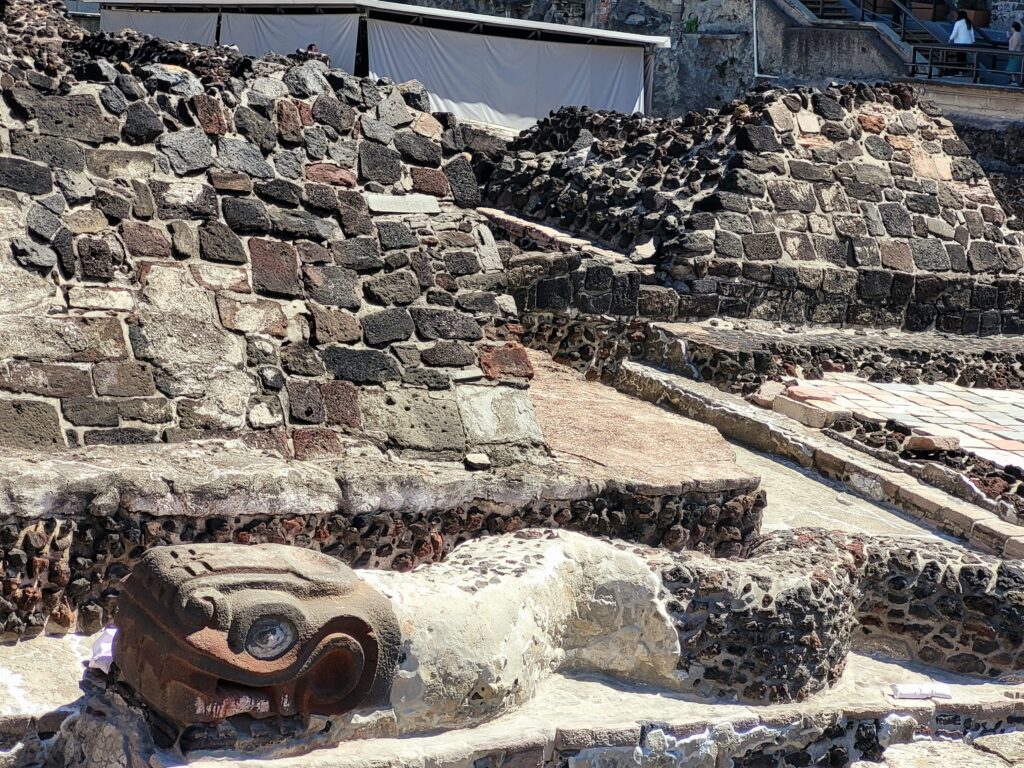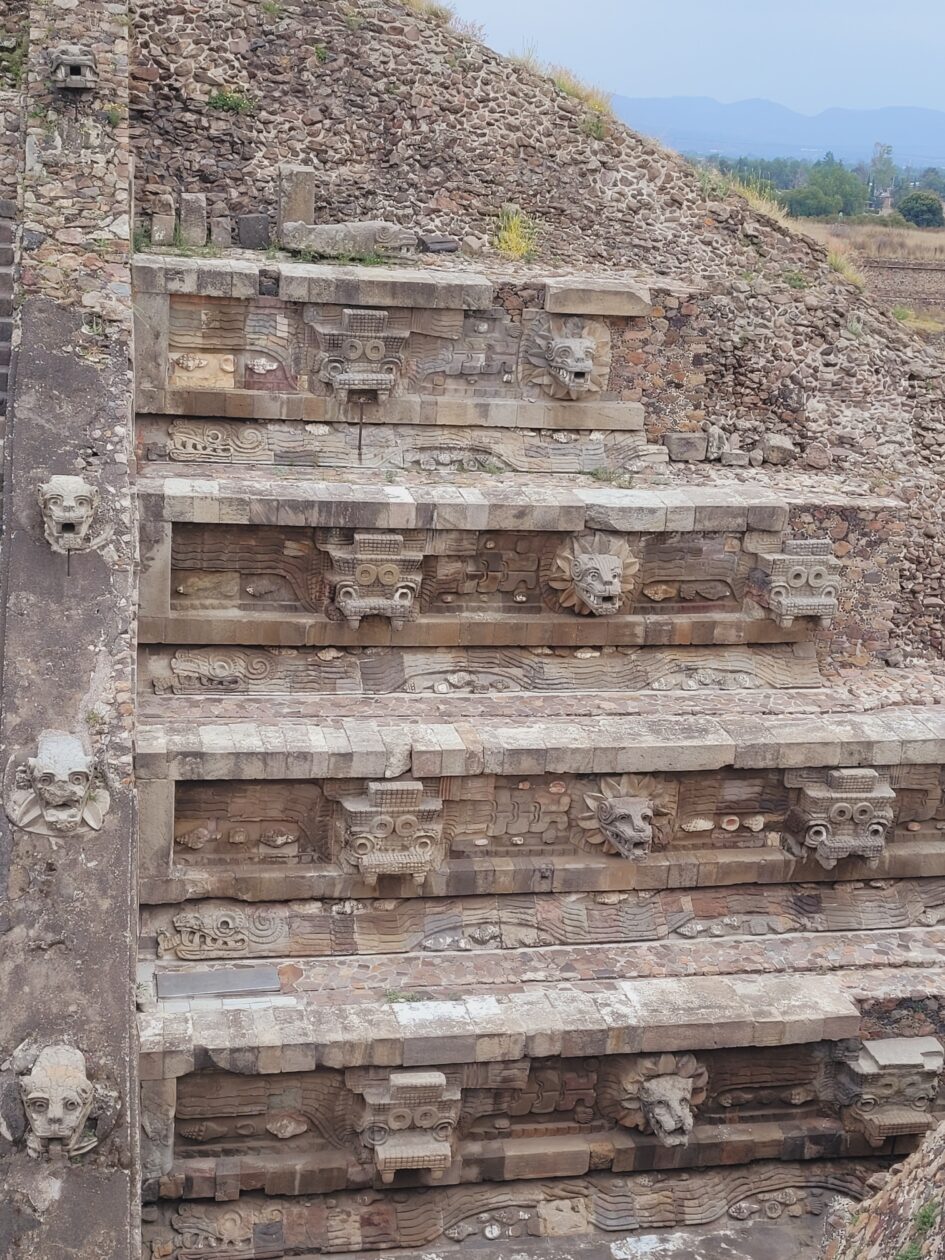Mexico City, Guadalupe, Teotihuacan – Heart of Ancient Civilizations
At Hotel Moneda in the historic center, we got a 4-person room with meals for $14/person. The street name (“Monetary”) recalls its colonial-era royal mint. After breakfast with chilaquiles and fresh tortillas, we visited the Anthropology Museum – a treasure trove of Mesoamerican civilizations.
Designed by Pedro Ramírez Vázquez in 1964, the museum’s umbrella-shaped roof (weighing 3,500 tons) symbolizes the Aztec tree of life. Highlights include:
- The Aztec Sun Stone – a 24-ton ceremonial altar mistaken as a calendar
- Colossal Olmec heads – basalt sculptures of rulers (1500-400 BCE)
- Replica of Moctezuma’s headdress (original in Vienna)

Zócalo – Where Eras Collide
Mexico City’s main square stands where Aztec Tenochtitlán’s center once was. The 16th-century cathedral features golden altars adorned with ribbons bearing personal prayers – we spotted one reading: “For Mr. XXX to keep my secret in his heart.”
Guadalupe – Soul of Mexican Spirituality
At Latin America’s most important pilgrimage site, we witnessed thousands from Puebla state dancing concheros (ritual dances with shells). The 1531 apparition to Juan Diego blended indigenous and Spanish symbols – his cloak’s image helped Christianize Mexico.

Teotihuacan – City of Gods
This 100,000-person metropolis (200 BCE-700 CE) features:
- Pyramid of the Sun – world’s 3rd largest pyramid
- Pyramid of the Moon – ceremonial site
- Avenue of the Dead – 2km main thoroughfare
- Feathered Serpent Temple – often missed by tours

Mexico City Revisited – Deeper Discoveries
On our return visit, we explored at our own pace. The Anthropology Museum’s Aztec and Maya halls showcase:
- Coatlicue statue – fearsome earth goddess
- Tenochtitlán model – pre-Spanish city layout
- Pacal’s tomb replica – famous Palenque ruler
At Teotihuacan, we explored the rarely visited Feathered Serpent complex. Note: As of 2024, climbing the Pyramid of the Sun is prohibited.

Diego Rivera & Mexican Muralism
The Diego Rivera Museum displays his 16m mural “Dream of a Sunday Afternoon in Alameda Park” depicting Mexican history. His National Palace murals (free guided tours available) offer powerful history lessons through art.

Plaza de las Tres Culturas – Mexico’s Identity Symbol
This square combines Aztec Tlatelolco ruins, a 16th-century church, and modern apartments. The site turned tragic in 1968 when hundreds of student protesters were massacred before the Olympics.

Zócalo’s Magic & Traditions
Around the cathedral, “curanderos” (healers) perform 20-50 peso rituals blending Catholicism and pre-Hispanic beliefs:
- Limpia cleansings with herbs/eggs
- Love spells
- Protection from the evil eye

Templo Mayor – Journey to Aztec Core
Discovered during 1978 construction, these Aztec temple ruins feature the famous Coyolxauhqui disk depicting the moon goddess dismembered by her brother, the sun god – a scene reenacted through human sacrifices.

Mexico City never ceases to amaze – where modernity meets tradition at every turn, from world-class museums to ancient pyramids, colonial churches to living street magic.

Leave a Reply